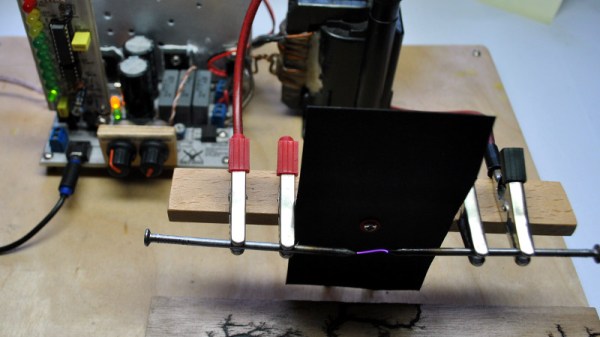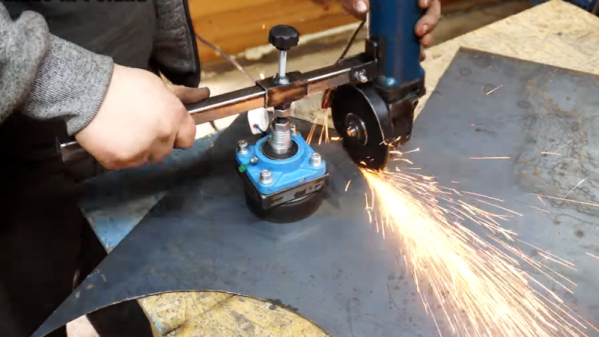Deep inside your smartphone are a handful of interesting miniature electromechanical devices. The accelerometer is a MEMS device, and was produced with some of the most impressive industrial processes on the planet. Sometimes, these nanoscale devices are produced with plasma etching, which sounds about as cool as it actually is. Once the domain of impossibly expensive industrial processes, you can now plasma etch materials in a microwave.
Of course, making plasma in this way is nothing new. If you cut a grape in half and plop it in a microwave, some really cool stuff happens. This is just the 6th grade science class demonstration of what a plasma is, and really it’s only a few dissociated water, oxygen, and nitrogen molecules poofing in a microwave. To do something useful with this plasma, you need a slightly more controlled environment.
The researchers behind this paper used a small flask with an evacuated atmosphere (about 300 mTorr) placed into a microwave for a few seconds. The experiments consisted of reducing graphene oxide to graphene, with the successful production of small squares of graphene bonded to PET film. Other experiments changed the optical properties of a zinc oxide film deposited onto a glass microscope slide and changing a PDMS film from being hydroscopic to hydrophobic.
While the results speak for themselves — you can use a microwave to generate plasma, and that plasma can change the properties of any exposed material — this is far from a real industrial process. That said, it’s good enough for an experiment and another neat technique in the home lab’s bag of tricks.


















